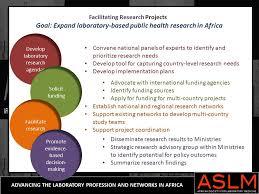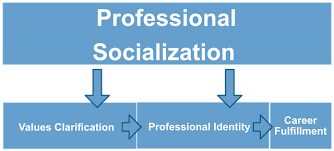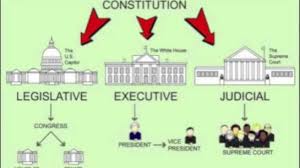| Topic (alphabetical order) |
Unit #3 |
| Reference in APA 6th edition format)
Annotation paragraph… |
|
| |
|
| |
|
| |
|
| AMN Healthcare. (March 27, 2014).The Limits on nurse practitioner practice: |
|
| current and future trends. Retrieved from: http://www.amnhealthcare.com/latest- healthcare-news/limits-nurse-practitioner-practice-current-future-trends/. |
Unit 1 |
| |
|
| The article explores the hindrances to nursing in modern and future practice. The information targets |
|
| the public health practitioners including Nurses, Physician, and physician assistants. |
|
| The information is not peer reviewed, nor scientifically collected. However, the information |
|
| remains relevant to the pharmacology and nursing field. The article |
|
| explains that there is need to implement the Affordable Care Act to ease the burden experienced |
|
| in the health care system. It calls the state remove restrictions and permit nurses practice |
|
| in the health care systems with minimal restrictions. The article lacks references but |
|
| blogs with related information are listed. The article is written in English using Scientific language. |
|
|
|
|
|
|
|
| Al Sha’alan, K., Ferwana, M., Saeed Ur, R., & Yaseen, I. A. (2013). Knowledge and practice of |
Unit 2 |
| primary care physicians in management of gastro esophageal reflux disease. Middle East |
|
| Journal of Family Medicine, 11(2), 40-46. |
|
|
|
| The article aims at investigating the role of physicians in management of Gastro- |
|
| esophageal reflux disease (GERD) According to this article authored by Khalid, Ferwana. Rahma and |
|
| Yaseen; GERD is very rampant in most countries with a prevalence rate ranges of 21-56%. The |
|
| paper targets the health practitioners and contributes essential information on the role of physician in |
|
| GERD. Management. The paper is peer reviewed by Middle East Journal of Family Medicine. The |
|
| information is gathered through qualitative research method and all references used to construct |
|
| the paper is listed on the last page. The language used to compile the report is English & scientific |
|
| language |
|
| |
|
| |
|
| |
|
| Chowalloor, P.V., Keen, H. I., Inderjeeth, C. A. (August 1, 2013). Gout in the elderly. Retrieve from https://www.oapublishinglondon.com/article/776# |
Unit 4 |
| |
|
| The article explains about Gout and its incidences in adults. According to Chowalloor and |
|
| colleagues, gout refers to mono sodium urate crystals deposition on the joints and soft tissues. |
|
| The article associates the pathology with increased morbidity and mortality. The disease |
|
| prevalence rate in the elderly has increased by two folds in the last decade. The article targets |
|
| both healthcare professional and the public. It includes etiology and disease pathophysiology, |
|
| clinical manifestation, diagnosis and management. There is no mention on scientific data |
|
| collection method. The article is also not peer reviewed but very enlightening on Gout disease. |
|
| The language used is English and scientific language. The article ends with a list of references |
|
| used to compile the paper. |
|
| |
|
| |
|
| |
|
| Clayton, S. (2014). Adherence to asthma medication. Nurse Prescribing, 12(2), 68-74. |
Unit 5 |
| |
|
| The article reports on patient’s adherence to asthma medication. According to Clayton, adherence to |
|
| Asthma is an intermittent airways disease that id reversible. It requires long term medication. |
|
| There is increased non-adherence which ranges between 30 and 70 percent. The article addresses |
|
| both the healthcare professionals and the public. It educates the public that non adherence to |
|
| medication results to negative impacts to the patients quality of life which translates to high |
|
| Healthcare cost burden. This paper is peer reviewed by Nursing Prescribing journal. The |
|
| information is gathered scientifically using the systematic review approach. All reference used |
|
| to compile the article are referenced. The article uses simple scientific language to compile |
|
| the report. |
|
| |
|
| |
|
| |
|
| Department of Health (August 29, 2012). Nurse practitioners. |
Unit 1 |
| Retrieved from http://doh.dc.gov/node/237762. |
|
|
|
| The article describes the nurse practitioner regulations and requirements as outlined by the Department of health in the United State. The information targets people in the population who wish |
|
| to become professional nurse. For instance, it indicates that a person can only practice nursing |
|
| if he/she is registered as nurse under Chapter 54. Other information includes educational |
|
| requirements, certification processes, Standard code of conduct for nursing practitioner and the scope |
|
| of practice. The information is not peer reviewed and is generated from the department of health. |
|
| The article lacks list of references. The article is written in English using Scientific language. |
|
|
|
|
|
|
|
| Department of Health Care Finance. (nd). Retrieve from http://dhcf.dc.gov/node/892092
|
Unit 5 |
|
|
| The article describes on District of Columbia (DC) Medicaid. This is a federal state insurance |
|
| Program which provides healthcare coverage to low income households and underprivileged |
|
| People. The article targets both the healthcare professionals and the public. It describes the criterion |
|
| to qualify for DC Medicaid. The article describes the differences between the MAGI Medicaid and |
|
| non –MAGI Medicaid. The article is not peer reviewed nor is the information gathered using |
|
| Scientific method; but, gathered from DC health Care legislation. The article is written in English |
|
| and simple scientific language that lay man can understand. The article lacks references but has |
|
| links listed on websites which contains further information on DC Medicaid. |
|
|
|
|
|
| |
|
| Greener, M. (2014). Managing asthma in school age children: An overview. British Journal of School Nursing, 9(10), 484-487. |
Unit 5 |
|
|
| The article describes the interventions to manage asthma in school aged children in UK. It is an |
|
| overview report. The article targets the public (particularly school children parents , care givers and |
|
| teachers. It also has some good information for the healthcare physician too. According to Greener, |
|
| about one in every eleven children is asthmatic. There are asthmatic emergency every 21 minutes. |
|
| Poor medication adherence to medication on children contributes to lower grades due to increased |
|
| absenteeism The article concludes that optimizing treatment could lower asthmatic attack on children |
|
| by 90% and 75% hospital readmissions. The article explains the symptoms , diagnosis, management |
|
| and treatment strategies including the long acting beta agonists. The article explains on the benefit |
|
| of adhering to inhaler technique and the role of school teachers and nurses. The article describes the |
|
| UK school asthma policies and the most effective strategies to manage asthma in school children. |
|
| The article uses qualitative research methodology and is peer reviewed. It is published in the British |
|
| Journal of school nursing. Reference list is listed on the last page of the article including further |
|
| information. |
|
|
|
|
|
|
|
| Harmes, K. M., Blackwood, R. A., Burrows, H. L., Cooke, J. M., Harrison, R. V., & Passamani, |
Unit 3 |
| P. (2013). Otitis media: diagnosis and treatment. American Family Physician, 88(7), 435-440. |
|
|
|
| The article reports on AOE, its diagnosis and treatment. According to the article, AOE is a |
|
| Complication which arises when the middle ear fluid becomes infected with microorganisms |
|
| Such as Streptococcus pneumniae, Moraxella catarrhalis and Haemophilus species. Management |
|
| of AOE is through pharmacological therapy including use of amoxicillin for patients who are not |
|
| Penicillin sensitive for both pediatrics and adults. The paper condemns use of nasal steroids and |
|
| Decongestants. The paper target public health practitioner and citizen. It provides immeasurable |
|
| Information on etiology, diagnoses and treatment. The paper uses qualitative research method. The |
|
| work is peer reviewed and is published American Academy of family physician. All references are |
|
| Included in the last page. The language used is English. |
|
|
|
|
|
|
|
| Healthy Children.Org (December 2, 2014). Effective birth control for sexually active teens. Retrieved from |
Unit 6 |
| http://www.healthychildren.org/English/ages-stages/teen/dating-sex/Pages/Birth-Control-for-Sexually-Active-Teens.aspx |
|
|
|
| This article highlights information on over the counter prescription for sexually active teenagers. |
|
| According to this paper, most parents are not comfortable on having sex education with their teens. |
|
| The article targets the public especially the teenagers and teenage parents. The article information |
|
| is an educative one and there is no scientifically collected data. Examples of the methods described |
|
| includes contraceptive implant, intrauterine device (IUD), Progestin injection (Depo Provera), |
|
| NuvaRing, birth control pills and contraceptive patch. Each contraceptive method pros and cons |
|
| are highlighted. The paper uses simple scientific language, simple enough for a teen to comprehend. |
|
| There is no reference list; but list on related topic links is made at the end of the article. |
|
|
|
|
|
|
|
| Health Affairs. (May 15, 2013). Nurse practitioners and primary Care (updated). |
|
| Retrieved from: http://www.healthaffairs.org/healthpolicybriefs/brief.php?brief_id=92. |
Unit 1 |
|
|
| The article describes the role of nurse practitioners in primary care. The information in the article |
|
| targets both the public and health practitioners. It aims at providing enlightening the target group |
|
| on policies which regulate the nursing practice. According to the article, Federal laws, state and local |
|
| policies are increasingly limiting the scope of practice for nursing practitioners in care services. |
|
| The information is peer reviewed, and is gathered through mixed Scientific research method. It is |
|
| generated from the Health policy briefs of United States. List of references is included. |
|
| The article is written in English using Scientific language. |
|
|
|
|
|
|
|
| John Hopkins Arthritis Center (October 10, 2012). Treatment of gout. Retrieve from http://www.hopkinsarthritis.org/arthritis-info/gout/gout-treatment/ |
Unit 4 |
|
|
| The article explains on the treatment of Gout disease. The article targets the healthcare professionals |
|
| and the public. According to the article, treatment aims at suppressing inflammation and pain control. |
|
| The article explains that treatment is effectively done by use of NSAIDs, Colchine and corticosteroids. |
|
| More therapeutic measures are elaborated using scientific language. The article is not peer reviewed |
|
| and is authored by the Manno Rebecca, an assistant professor of medicine at the Johns Hopkins |
|
| University. There is no reference list and other associated links are lacking. There is no mention |
|
| of scientific methodology of data collection. However, the therapeutic interventions are described |
|
| are very enlightening. |
|
|
|
|
|
|
|
| Kierkus, J., Oracz, G., Korczowski, B., Szymanska, E, Wiernicka, A., Woynarowski. M. (2014 |
|
| Comparative safety and efficacy of proton pump inhibitors in pediatric GERD. Drug safety 37:309-316 |
Unit 2 |
|
|
| The article explores on the the safety on using proton pump inhibitors (PPI) in managing GERD in |
|
| Pediatric. The study also evaluates the efficacy of PPI on children. According to the article, PPI are |
|
| Very effective in management of GERD in infants; and information on the long term safety in infants |
|
| Is limited. The article targets pediatricians, and in adding knowledge on GERD management in |
|
| Infants. The paper is peer reviewed and published by Springer international publishing Switzerland. |
|
| The article is written using scientific language and contains data generated using mixed method of |
|
| Scientist research. The list of references used to compile this study is written in the article’s last |
|
| Page. |
|
|
|
|
|
|
|
| Mayo Clinic (November 25, 2014). Gout. Treatment and drugs. Retrieve from http://www.mayoclinic.org/diseases-conditions/gout/basics/treatment/con-20019400 |
Unit 4 |
|
|
| The article is authored by Mayo Clinic. It explains on Gout definition, symptoms, causes, risk factors |
|
| complications and treatment and drugs. The medications indicated as the most effective includes |
|
| Nonsteroidal anti-inflammatory drugs (NSAIDs) such as Motrin. Dosages are as prescribed by the |
|
| physician. Colchine and Corticosteroids are also effective to manage the disease. The preventive |
|
| medicines include the uric acid production blockers such as Lopurin and Febuxostat. Other therapy |
|
| includes medication which eradicates uric acid. Lifestyle modification and dietary changes are |
|
| encouraged. The article is not peer reviewed and the data is not scientifically collected. There are no |
|
| references. However, the information is very educational. The article targets the general public. |
|
|
|
|
|
|
|
| Mittal, A., & Kumar, S. (2014). Role of pH of External Auditory Canal in Acute Otitis Externa. |
|
| Indian Journal of Otolaryngology & Head & Neck Surgery, 66(1), 86-91. doi:10.1007/s12070-013-0684-0 |
Unit 3 |
|
|
| The article highlights the role of PH during treatment of External Auditory Canal in Ear infection. |
|
| The prospective study evaluates on the pH of the normal auditory canal in healthy individuals and |
|
| Compared the results with people diagnosed with acute otitis externa (AOE). The study also |
|
| explored The effect of temperature, humidity in relation to AOE incidences. The study results |
|
| indicate that Normal EAC pH is acidic and more alkaline in AOE. The study targeted ENT health |
|
| practitioner. The study uses English healthcare scientific language. The research technique used is |
|
| quantitative and is peer reviewed; the information is published in Indian J otolaryngology Head |
|
| Neck Surg. |
|
|
|
|
|
|
|
| National Conference of State Legislatures. (July 11, 2014). Teen pregnancy prevention. Retrieve from http://www.ncsl.org/research/health/teen-pregnancy-prevention.aspx |
Unit 6 |
|
|
| The article is authored by the National Conference of State Legislatures. The audience targeted |
|
| teenagers and teenage parents. It outlines the birth rates among the different teenage girls per region. |
|
| The article explains effects of teenage pregnancies including increased school dropouts and increase |
|
| in intergenerational conflicts. Teenage prevention programs are outlined. The information is not |
|
| collected using any scientific method and it is not peer reviewed either. The language used is simple |
|
| English language. The additional resources are listed and links provided. |
|
|
|
|
|
|
|
| NPR. (October 1, 2014). Long-term birth control works best for teens, pediatricians say. Retrieve form http://www.npr.org/blogs/health/2014/10/01/352980000/long-term-birth-control-works-best-for-teens-pediatricians-say |
Unit 6 |
|
|
| The article targets the teenage and teenagers parents. It explains that the long term birth control |
|
| Approach is the most effective technique to mitigate teenage pregnancies. These includes the IUD’s |
|
| And implants. The article highlights that teenager’s lack information about these long term strategies. |
|
| The article is not peer reviewed, but carries contents from peer reviewed articles such as the New |
|
| England Medicine. The article also includes an interview with pediatricians on the most effective |
|
| Technique of teenage contraception. The scientific language is used and mixed research method is |
|
| Applied. There are no references. |
|
|
|
|
|
|
|
| Redwood, T., & Neill, S. (2013). Diagnosis and treatment of asthma in children. Practice Nursing, 24(5), 222-229 |
Unit 5 |
|
|
| The article targets the general public and healthcare professionals. The article highlights the disease |
|
| etiology, diagnosis and the disease management. The article suggests that the disease diagnosis |
|
| requires further study on comprehensive representation, the detailed therapeutic regime and ways to |
|
| manage recurrent and persistent respiratory symptoms. The article acknowledges the importance of |
|
| drug adherence and the integration of non-pharmacological technique. The article is peer reviewed |
|
| and is published in the practice nursing journal. The article uses qualitative research method. |
|
| The reference list used to compile the article is listed |
|
|
|
|
|
| Thornton, K., Parrish, F., Sword, C. (2011). Topical vs. systemic treatments for acute otitis |
|
| media. Pediatric Nursing 37(5); 263-270 |
Unit 3 |
|
|
| This article compares tropical treatment of AOE with systemic treatments in infants. According to |
|
| The research tropical treatment such as use of analgesic ear drops and antibiotics are the most |
|
| Effective treatment because they release pain. The article recommended for increased patient |
|
| education based on the evidence based practice. The article targets health care practitioners and the |
|
| public. The information is simply put in English. The article uses quantitative research. The work is |
|
| Also peer reviewed and has been published in pediatric nursing. The paper has reference list. |
|
|
|
|
|
|
|
| University of Maryland Medical Center. (June 25, 2014). Gout. Retrieve from http://umm.edu/health/medical/reports/articles/gout |
Unit 4 |
|
|
| The article targets the general public. It is about Gout and the disease pathophysiology. According to |
|
| the article, about 8.3 million Americans suffer from gout, especially on the aging population. The |
|
| article describes the pathophysiology, the symptomatology, complications, diagnosis, disease control |
|
| management and risk factors. The article is not peer reviewed. The article is not collected through |
|
| any scientific method, but it is very informing and beneficial. The medical conditions linked to gout |
|
| are listed and the resources links. The references are also listed including various text books and |
|
| peer reviewed journals. |
|
|
|
|
|
| Venkataraman, J., & Krishnan, A. (2012). |
|
| Long-term medical management of gastro-esophageal reflux disease: how long and when to consider surgery? |
Unit 2 |
| Tropical Gastroenterology: Official Journal of the Digestive Diseases Foundation, 33(1), 21-32. |
|
|
|
| The article evaluates the management of GERD using pharmacological therapy such as proton |
|
| Acid depressants and non-acid depressants drugs. According to the article, there is limited |
|
| information on how or when the treatment should end. The paper recommends that future research |
|
| should include randomized controlled trials to evaluate the most effective GERD intervention i.e. |
|
| use of PPI vs. laparoscopic fundoplication. The article aims at educating the public and public |
|
| Health practitioners on other alternatives of managing GERD other than pharmacological therapy. |
|
| The article uses qualitative research technique. It is peer reviewed and has been published by |
|
| Tropical Gastroenterology journal. All list of references used to compile this piece of information |
|
| Is listed on the last page. The language used to compile the report is English scientific. |
|
|
|
|
|
|
|
| Werner, A. (2012). Taking a long-term look at childhood asthma treatment. RT: The Journal for Respiratory Care Practitioners, 25(1), 18-21 |
Unit 5 |
|
|
| The article highlights on the long term way of looking at childhood Asthma. The article is an |
|
| Interview on Stanley J. Szefler.- the principal for NHLBI sponsored Childhood Asthma management |
|
| Program (CAMP). The article is on the long term effects on treatment. The article explores on the |
|
| Factors which improves or limits asthma progression on children; ways to integrate the factors when |
|
| Making clinical decisions. The article uses qualitative method of research. It targets the researchers, |
|
| Healthcare professionals and general republic. The article lacks references and it is peer reviewed. |
|
| The information is very educative and is published by the journal for respiratory care practitioners |
|
|
|
|
|
|
|
|
|
|
|
|
|
|
|
|
|
|
|
|
|
|
|
|
|
|
|
|
|
|
|
|
|
|
|
|
|
|
|
|
|
|
|













